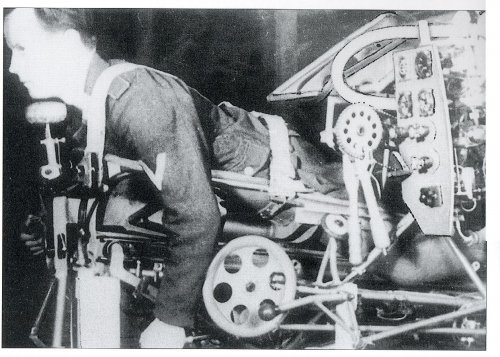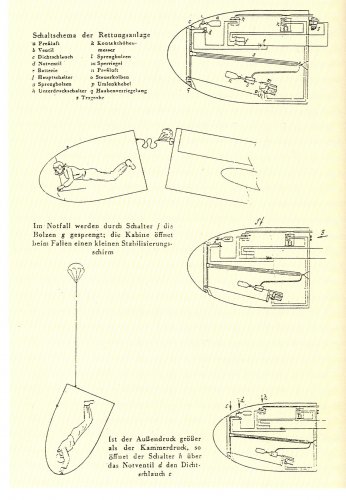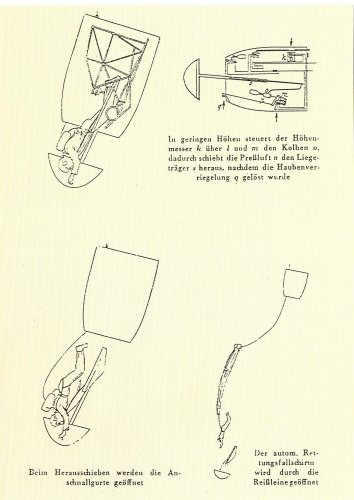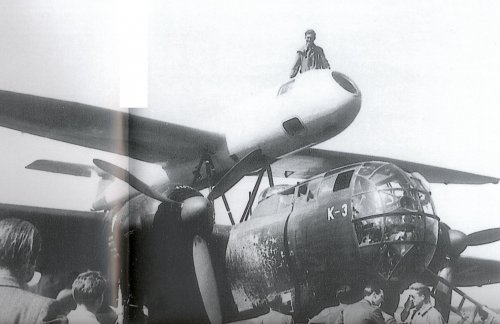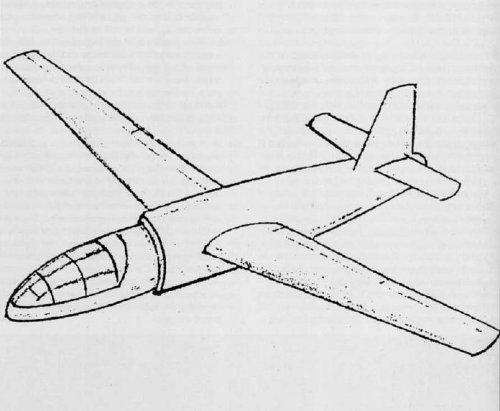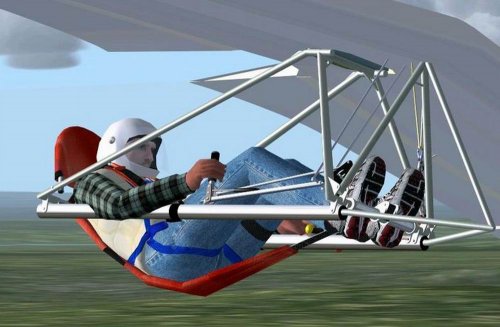You are using an out of date browser. It may not display this or other websites correctly.
You should upgrade or use an alternative browser.
You should upgrade or use an alternative browser.
DFS 228
- Thread starter Justo Miranda
- Start date
From
-Die deutschen Raketenflugzeuge 1935-45
-Geheimprojekte der DFS 1935-45
Post-5
-Die deutschen Raketenflugzeuge 1935-45
-Geheimprojekte der DFS 1935-45
Post-5
Attachments
-
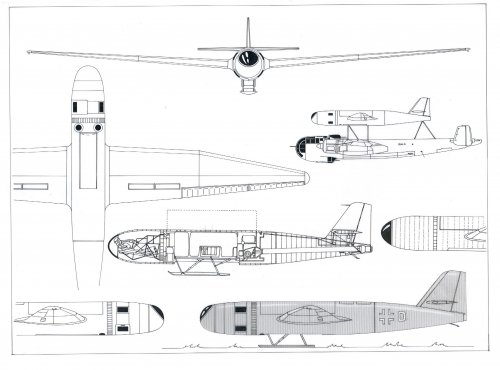 Escanear0004.jpg268 KB · Views: 220
Escanear0004.jpg268 KB · Views: 220 -
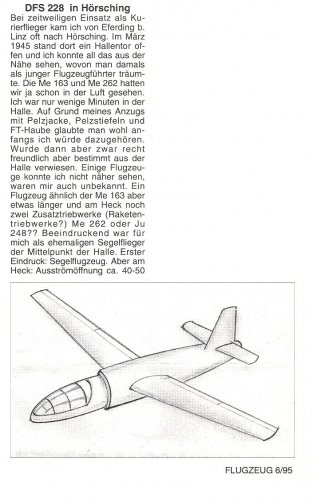 Escanear0007.jpg147.8 KB · Views: 145
Escanear0007.jpg147.8 KB · Views: 145 -
 Escanear0006.jpg224.1 KB · Views: 128
Escanear0006.jpg224.1 KB · Views: 128 -
 Escanear0005.jpg84.1 KB · Views: 117
Escanear0005.jpg84.1 KB · Views: 117 -
 Escanear0003.jpg264.6 KB · Views: 131
Escanear0003.jpg264.6 KB · Views: 131 -
 Escanear0002.jpg107.6 KB · Views: 158
Escanear0002.jpg107.6 KB · Views: 158 -
 Escanear0001.jpg333 KB · Views: 163
Escanear0001.jpg333 KB · Views: 163 -
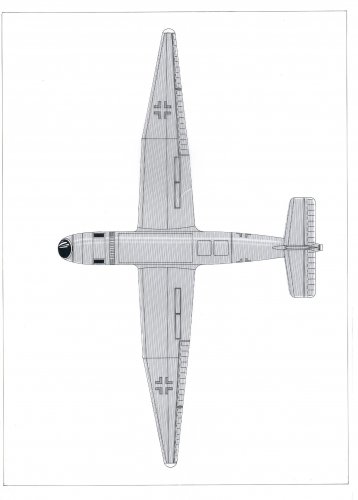 Escanear.jpg195.1 KB · Views: 175
Escanear.jpg195.1 KB · Views: 175
- Joined
- 9 October 2009
- Messages
- 21,628
- Reaction score
- 13,043
From 'Germany's Secret Weapons in World War II', by Roger Ford:
The DFS 228 AND DFS 346
DFS later built a single prototype of a cargo-carrying glider, the DFS 331, in 1941, but by that time the main thrust of the Institutes's work lay in the development of high-performance experimental sailplanes. The most significant of these was the DFS 228, planned as a high-altitude photoreconnaissance aircraft, to be transported to an altitude of 10,000m (32,800ft) or more and released, a rocket motor then taking it to an altitude of 23,000m (75,400ft). The rocket motor was then to have been used intermittently to maintain altitude until its fuel was exhausted, whereupon the DFS 228 would glide back to friendly territory. Depending on thermal conditions, it was confidently expect that the aircraft would be able to return from targets over 1000km (620 miles) away.
Only a few were constructed. Many test flights were made, all of them it is believed (though there are differing reports) without rocket power, and a new pressurised cabin, with the pilot in the prone position, was eventually developed and tried out just days before the war's end. Both the original cabin, in which the pilot sat upright, and the later version, which was very much more effective, were attached to the rest of the airframe by explosive bolts. Set free, the nose cone deployed a parachute until the outside temperature and pressure reached life-supporting levels, whereupon his seat or couch was ejected by compressed air and he made a normal parachute descent.
A development of the DFS 228, the DFS 346, was designed as a supersonic trials aircraft. It was to have had two motors, variable-chord swept wings and a Mutlhoop-stye T-tail, but was otherwise similar to the DFS 228 in its later incarnation, although constructed entirely of stressed aluminium rather than wood. An unpowered prototype was to have been built (in wood). It is believed that this aircraft and a number of somewhat modified DFS 346s were constructed in the Soviet Union after the war, and there are persistent but unsubstantiated claims that the former was the first aircraft to exceed the speed of sound with DFS test pilot Wolfgang Ziese at the controls in May 1947, some five months before Chuck Yeager's supersonic flight in a Bell X-1 on 14 October.
- Joined
- 11 March 2006
- Messages
- 8,604
- Reaction score
- 3,620
The sketch by Dietrich Warratz looks like a jet engine powered aircraft, with an annular intake.
The caption in picture 6 of Justos post #6 says, that might have been, because the outer skin of the
DFS 228 was removed, but maybe the ejectable recovery capsule was separated just a small distance
from the rest of the aircraft, so that there appeared to be a ring shaped opening.
Seems to be a typical case, how observations of even experienced contemporary witnesses can lead
to wrong conclusions.
The caption in picture 6 of Justos post #6 says, that might have been, because the outer skin of the
DFS 228 was removed, but maybe the ejectable recovery capsule was separated just a small distance
from the rest of the aircraft, so that there appeared to be a ring shaped opening.
Seems to be a typical case, how observations of even experienced contemporary witnesses can lead
to wrong conclusions.
I never did understand the mania for a prone pilot layout.
Laying on your stomach gets very uncomfortable after a while. And having to keep your head up does a number on the neck. I think you'd have superior G tolerance on your back rather than stomach as the weight wouldn't be pressing your body into your chest and compressing your lungs as a result. Yes, it might be a bit more complex with the instrument panel layout but I think supine beats prone every time otherwise.
Laying on your stomach gets very uncomfortable after a while. And having to keep your head up does a number on the neck. I think you'd have superior G tolerance on your back rather than stomach as the weight wouldn't be pressing your body into your chest and compressing your lungs as a result. Yes, it might be a bit more complex with the instrument panel layout but I think supine beats prone every time otherwise.
- Joined
- 6 November 2010
- Messages
- 5,101
- Reaction score
- 5,159
I agree on all the disadvantages, but the advantage of a prone pilot is a reduced frontal cross section, while still offering a reasonable view over the nose. An all glass/perspex nose cone would improve a supine pilot's view, but would be difficult to armour or pressurize.
Vladimir
I really should change my personal text
- Joined
- 22 September 2015
- Messages
- 321
- Reaction score
- 51
My opinion : the reason is that the pilot in prone position can sustane much greater G's and prone postion give to designers possibility to make aircraft cross-section smaller in diameter- much more speed of aircraft.
- Joined
- 11 March 2006
- Messages
- 8,604
- Reaction score
- 3,620
The prone position may allow for a better protected cockpit and need less transperency, than a reclined
position. So, for the Bv 40 glider fighter it probably was a good choice. For a high flying recce a/c, where
the pilot may be interested more in the ground below him and where's not much need for checking the
air space around, it's probably ok, too.
But looking at an extremely reclined position (here in an UL aircraft, but certainly tranferable to other types),
I doubt, that a prone position could offer a much smaller frontal area !
[size=8pt](picture from http://s59.photobucket.com/user/comet4/media/light%20aircraft/Silent%20flight/swiftHGcloseup_zpsdcf5a70a.jpg.html )
position. So, for the Bv 40 glider fighter it probably was a good choice. For a high flying recce a/c, where
the pilot may be interested more in the ground below him and where's not much need for checking the
air space around, it's probably ok, too.
But looking at an extremely reclined position (here in an UL aircraft, but certainly tranferable to other types),
I doubt, that a prone position could offer a much smaller frontal area !
[size=8pt](picture from http://s59.photobucket.com/user/comet4/media/light%20aircraft/Silent%20flight/swiftHGcloseup_zpsdcf5a70a.jpg.html )
Attachments
Vladimir
I really should change my personal text
- Joined
- 22 September 2015
- Messages
- 321
- Reaction score
- 51
Ok, in case of DFS-228, the prone position also good chose. It is a high altitude recon-so it is comfortable for pilot look downwards (to see what was happens on the ground) than foreward, i think...
Similar threads
-
-
-
-
Messerschmitt Me 309/509 Projects & Prototypes
- Started by Wurger
- Replies: 69
-
For Sale: Books on German secret projects - aircraft - tank
- Started by brontolino
- Replies: 0


